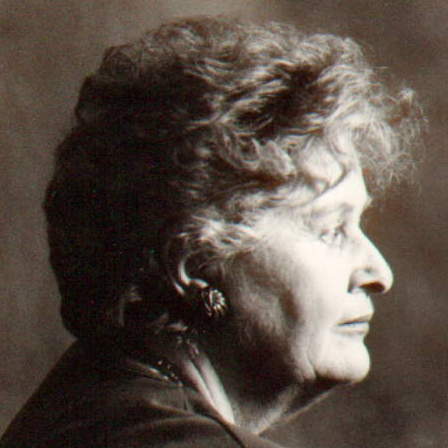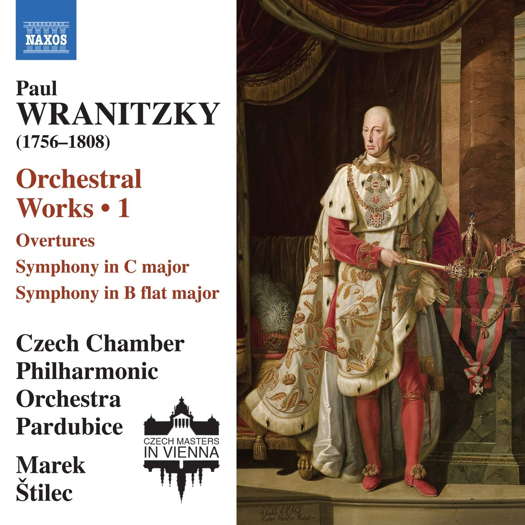- Olive Music
- Umberto Giordano
- Francisco Kraus Trujillo
- Paul von Klenau
- Kempff
- Naxos Music of Brazil
- BR Klassik
- San Francisco Botanical Garden
 SPONSORED: An Integral Part - Lindsey Wallis looks forward to the Canadian Music Centre's tribute concert to composer Roberta Stephen.
SPONSORED: An Integral Part - Lindsey Wallis looks forward to the Canadian Music Centre's tribute concert to composer Roberta Stephen.
All sponsored features >>
 DISCUSSION: John Dante Prevedini leads a discussion about Composers, individuals or collective?, including contributions from David Arditti, Halida Dinova, Robert McCarney and Jane Stanley.
DISCUSSION: John Dante Prevedini leads a discussion about Composers, individuals or collective?, including contributions from David Arditti, Halida Dinova, Robert McCarney and Jane Stanley.

A Journey of Unending Delights
Music by Paul Wranitzky impresses GERALD FENECH
'Marek Štilek's vibrant conducting draws some sparkling performances of these thoroughly appealing works ...'
Paul Wranitzky was born in the village of Neureisch in Southern Moravia, where he received his first musical training at the local monastery. In 1776 he moved to Vienna to study theology at the University, where he also became music director at the seminary. In 1783 he became music director to Count Johann Baptist Esterhazy, upon whose recommendation the composer joined the Viennese Masonic Lodge, for which he composed songs as well as symphonies. Joseph Martin Kraus (1756-1792) was a visiting member at the Lodge in 1783, and being already an established composer, recognized Wranitzky's budding musical talent. It is presumed that Kraus provided some lessons and also encouragement. Several early publications also mention Wranitzky as a Haydn student.
Wranitzky and Mozart became masonic brothers when three Lodges merged in 1785, and for the occasion on 15 December 1785 a concert was organized wherein two symphonies by Wranitzky as well as a cantata, piano concerto and improvisation by Mozart were performed. In the same year, Wranitzky became orchestra director at the Karntnertor Theatre, and two years later at the Burgtheatre. From the early 1790s until his death he would hold the position of first orchestra director for both court theatres. After his sudden death in 1808 his musical legacy was quickly overshadowed by his colleagues and friends Mozart, Haydn and Beethoven. Only in recent years has his music begun to attract the attention it deserves.
Listen — Wranitzky: Die Poststation Overture
(track 1, 0:00-0:58) ℗ 2021 Naxos Rights (Europe) Ltd :
Wranitzky composed in most genres, but he had a special affection for the symphony. He produced them continuously during his career, but only forty-five have come down to us. During the 1790s he was the most important symphonist in Vienna, so it's not much of a surprise that many features of Wranitzky's style are echoed in the early symphonies by Beethoven. This first volume in Naxos' projected cycle of Wranitzky's symphonic works is auspicious indeed. The programme includes two overtures from the operas Die Poststation (1794) and Das Fest der Lazzaroni (1794) respectively and two wonderful symphonies.
Listen — Wranitzky: Das Fest der Lazzaroni Overture
(track 10, 4:33-5:31) ℗ 2021 Naxos Rights (Europe) Ltd :
The Symphony in C, Op 19, was composed in 1792 to mark the ascension to the throne of Emperor Franz II. The work is grand and celebratory, and the composer's use of trumpets and timpani leaves a certain regal effect on the listener. The symphony has also some lyrical moments of great beauty and ends on a note of joyous excitement and festive exuberance.
Listen — Wranitzky: Finale: Presto (Symphony in C, Op 19)
(track 5, 5:07-6:06) ℗ 2021 Naxos Rights (Europe) Ltd :
The Symphony in B Flat (1798) is more dramatic and showcases Wranitzky's mature style in the form of expanded orchestral forces, contrasting textures and broad musical invention.
Listen — Wranitzky: Adagio (Symphony in B flat, Op 33 No 1)
(track 7, 4:53-5:48) ℗ 2021 Naxos Rights (Europe) Ltd :
Marek Štilek's vibrant conducting draws some sparkling performances of these thoroughly appealing works; indeed their exquisite Viennese charm keeps a constantly cheerful and jovial state of affairs.
Judging by this initial issue, we can prepare ourselves for a journey of unending delights. Please do not tarry to issue the next helping, to which I look forward with eager ears.
Copyright © 30 April 2021
Gerald Fenech,
Gzira, Malta

CD INFORMATION - PAUL WRANITZKY: ORCHESTRAL WORKS 1


